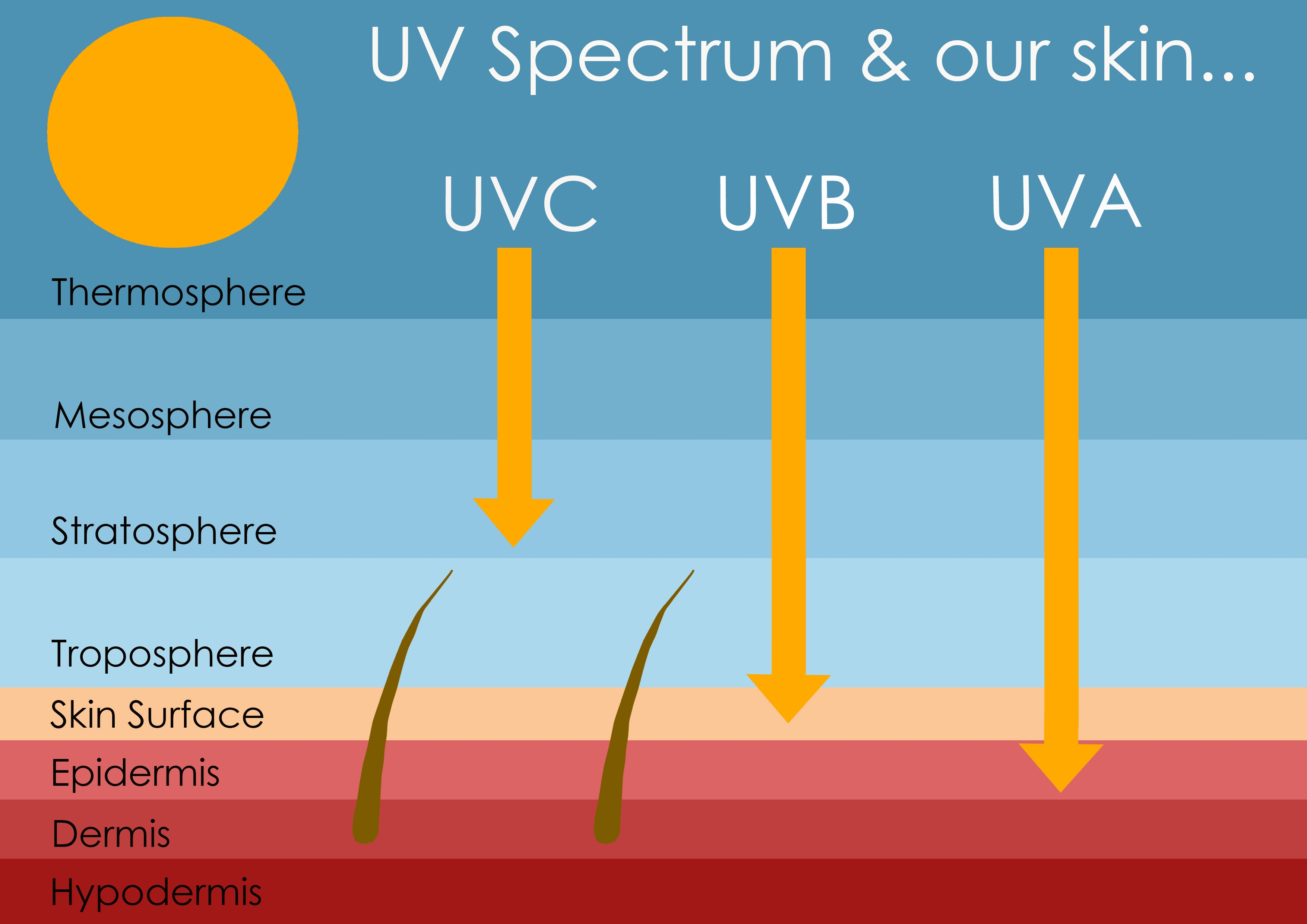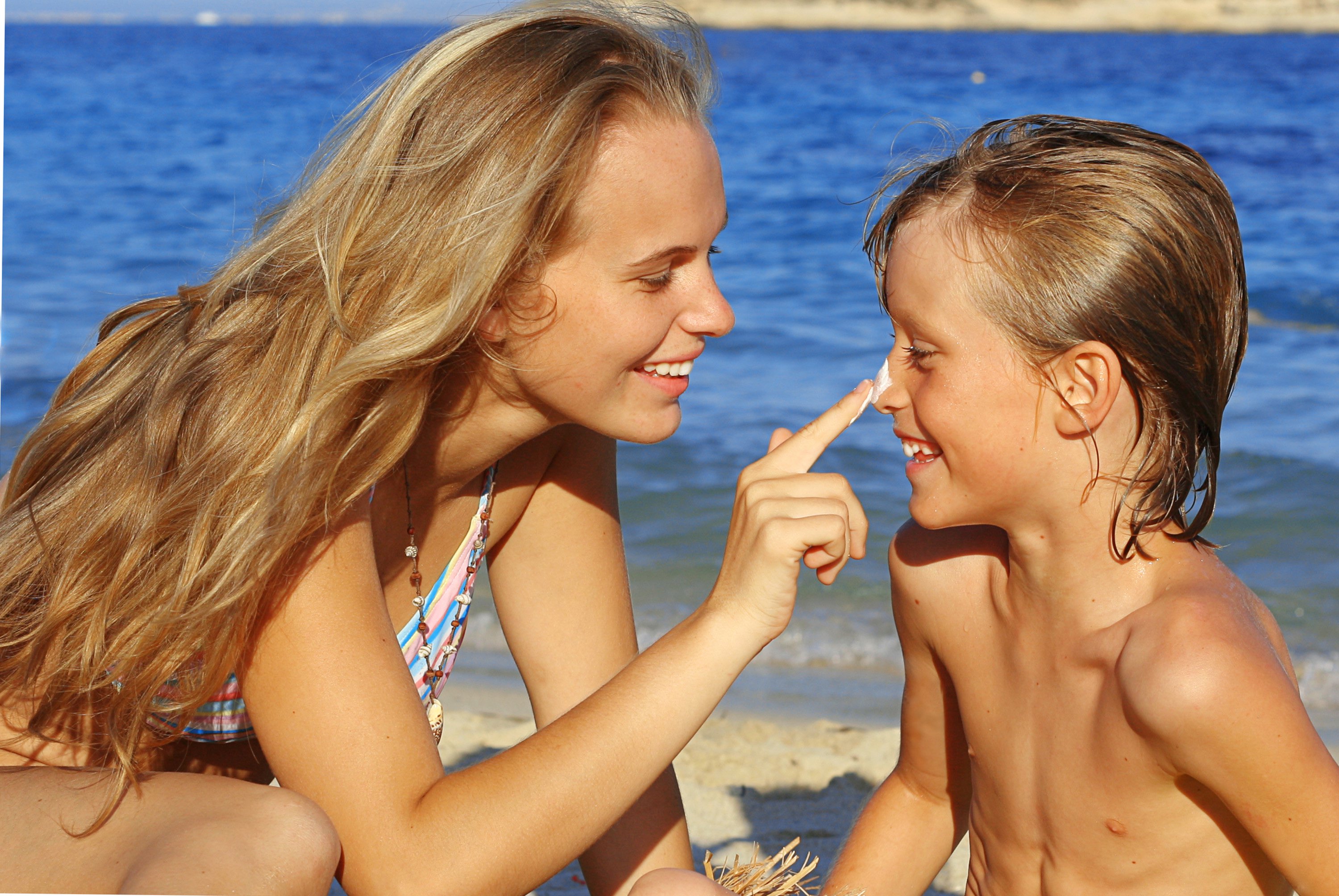Dangers of tanning
Getting sun burnt has to be the top issue in the list of dangers of tanning.
Whether indoors under tanning lamps or outdoors embracing the sunshine, allowing those UV rays to damage your skin can have various dangerous results.
Dangers of tanning - physiological description
The following description of what happens physiologically to our bodies may help a little in understanding at a deeper level just why there have been so many warnings over the years not to let our tanning get out of hand and result in a sun burn.

The sun's ultraviolet (UV) light rays (the same as used indoors in tanning salons) damage the skin by causing chemical bonds to form in the wrong places along the DNA molecules in our cells.
Normally, other even smaller molecules called photolyases heal this damage. However, when the DNA is too damaged for these photolyases to be able to repair it, the cells die, which results in perhaps one of the most common dangers of tanning... 'a sun burn'.
In nature, DNA avoids damage by converting these UV rays into heat.
Sunscreen lotions are designed to protect us by:
- mineral sunscreens that reflect the sun's UV rays away from the skin
- chemical sunscreens dissipating UV rays as heat
Sunburn happens when the DNA absorbs the UV energy instead of converting it to heat. This is due in part to the random position of the DNA molecule within our cells when the UV hits it.
When the UV energy is absorbed through the skin, it triggers chemical reactions that form lesions, or errant chemical bonds, along the DNA strand.
Dangers of tanning : DNA

If the photolyases are unable to completely repair these lesions, the DNA is then unable to replicate efficiently. Resultant badly damaged cells will simply die, giving what we know as that that painful sunburn sting.
Scientists also believe that this chronic cell damage then creates one of the most extreme dangers of tanning... mutations that logically lead to diseases, of which skin cancer is highlighted as the main one.
Researchers at Ohio State University, physicist and chemist Dongping Zhong and his colleagues, have found a new way to study how these photolyase enzymes move as they busy repairing the DNA damage caused by the sun. They have created ultra-fast pulses of laser light to "spy" on a photolyase while healing a damaged strand of DNA.
Their research hopes to contribute to a deeper understanding of how nature deals with this healing in the hope that we can replicate the process with new therapies for preventing or curing sunburned skin.
Until then, we need to heed the warnings from the medical community of the dangers of tanning, and approach it with the dedicated mind not to get sun burnt. Getting a bronzed glow, especially when summertime comes around, is not only possible to do without getting burnt, but is far better for your health, if you just let your skin get there slowly.
Protection from the dangers of tanning
 Protect your loved ones from tanning dangers
Protect your loved ones from tanning dangersIt's no secret that excessive exposure to ultraviolet rays from the sun can cause skin damage. With each sunburn, the chances of developing skin cancer increases dramatically.
Using natural, organic sunscreen or sunblock in order to protect your skin from both UVA and UVB rays can further assist your body with the healing of UV damage. Many of these natural, organic based sunscreens now include additional healing ingredients such as antioxidants.
However, many people forget to use sunscreens while others simply ignore them altogether, falsely believing that they are not susceptible to skin cancer! By the time you have a melanoma it's a little late for sunscreen.
Such attitudes have made it that much more necessary to push sun care education on the general public. Lying out in the sun for hours on end to get a natural tan can be hazardous to the skin and a person's health if the sunbather has not applied sunscreen prior to tanning.
Dangers of tanning in salons
 Dangers of Tanning in a Salon
Dangers of Tanning in a SalonThere is an incredible number of people who seek tanning salons as a 'better' alternative for tanning outdoors because they think it is a safer option.
But that couldn't be further from the truth.
Even though tanning beds don't require being out in the actual sun's rays to achieve a tan, tanning beds still emit the same ultraviolet rays that are potentially so dangerous.
Tanning beds use UVA rays at higher doses for shorter periods of time than are present in natural sunlight.
UVA rays are longer than UVB rays and therefore penetrate far deeper into the skin's layers, where the damage will occur.
If you plan on being under the sun's rays for an extended period of time, make sure you wear sunscreen and reapply it every 2 hours, at least.
If you plan on being under a tanning bed's lights, be aware of the effects of tanning beds and wear protective eyewear and a tanning bed lotion to keep your skin hydrated.
Unfortunately, most indoor tanning lotions do not provide any sun protection so that means your skin is still at the mercy of the UVA rays. If they do provide protection, it is mostly only SPF protection, which means you only have protections from UVB rays.
Skipping indoor tanning altogether is the best option of saving your skin but if that is impossible for you, then try to limit the number of times you tan and how long your sessions last.





New! Comments
Have your say... please leave me a comment in the box below.